Besides the usual sources (World Atlas of Wine, Oxford Companion to Wine, Decanter, etc.), the information provided by the New Zealand Winegrowers organisation on the New Zealand Wine website is as altogether unique as the wine. The quality of the material (articles, videos, maps, statistics, etc.) is outstanding, all made freely available, idem for the New Zealand Wine Discovery Course and The New Zealand Wine Textbook. Recommended!
Highly recommended as well is John Bartlett‘s New Zealand Wine Directory, an online resource containing thousands of links to everything about New Zealand Wine. Like NZW, the information is available at no charge. Bravo!
Below a selection
– A few statistics
– The best wineries
– A little history
– Wine regions (Marlborough, Hawke’s Bay, Wairarapa)
– Climate
– Learning & Books
– Masters of Wine
– Podcasts
– Misc.
Current campaign is Altogether Unique.
New Zealand Winegrowers is the national organisation for the country’s grape and wine sector, with over 600 grower members and 700 winery members. Established in March 2002, it is the only unified national winegrowers industry body in the world. – New Zealand Wine > About Us
- Bragato Research Institute
- New Zealand Winegrowers (Wikipedia)
A Few Statistics
According to the OIV country statistics 2024, New Zealand ranks 30th countries in surface area (42,500 ha), 15th as producer, and 11th as exporter.
90% of the wine produced is exported, mainly to the US, UK, Australia, and Canada.

New Zealand produces only 1% of the world’s wine, but has an international presence and reputation that far exceeds that, due to its diversity, world-leading focus on sustainability, and of course its distinctly New Zealand expression in the glass
For vineyard reports, vintage data, KPIs, and annual reports, see New Zealand Wine.
From the 2024 Vintage Report
- Marlborough remains the largest producing region (30,444 ha | 72%)
- Sauvignon Blanc remains the most significant variety (28,109 ha | 66%)
- Marlborough Sauvignon Blanc is 59% of production (25,157 ha)

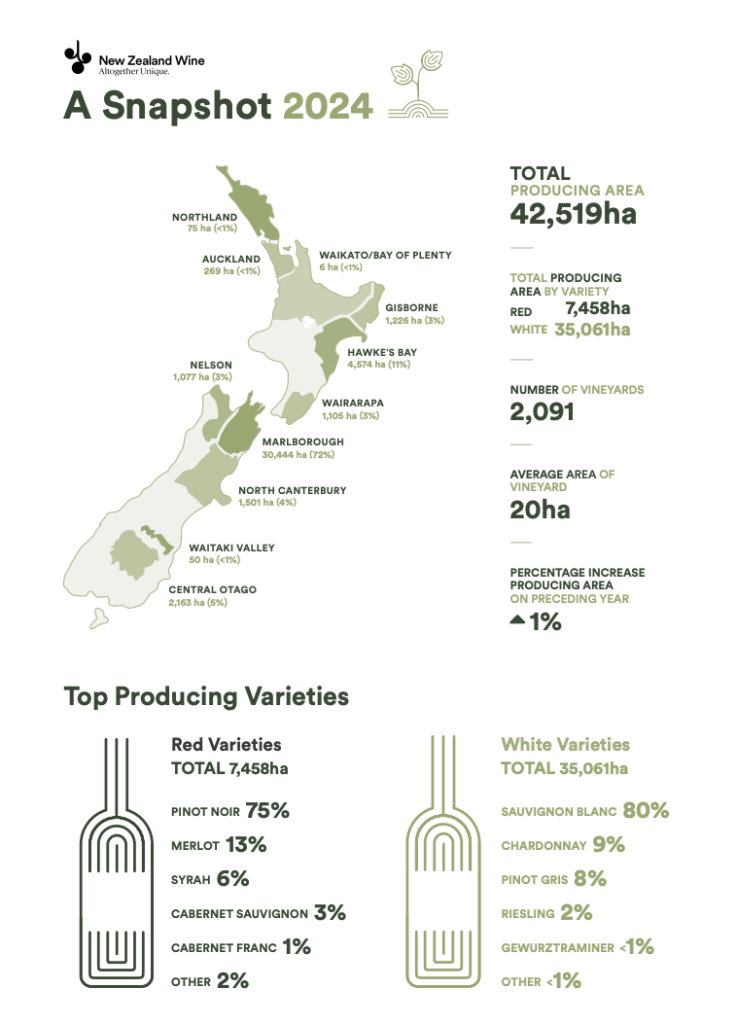
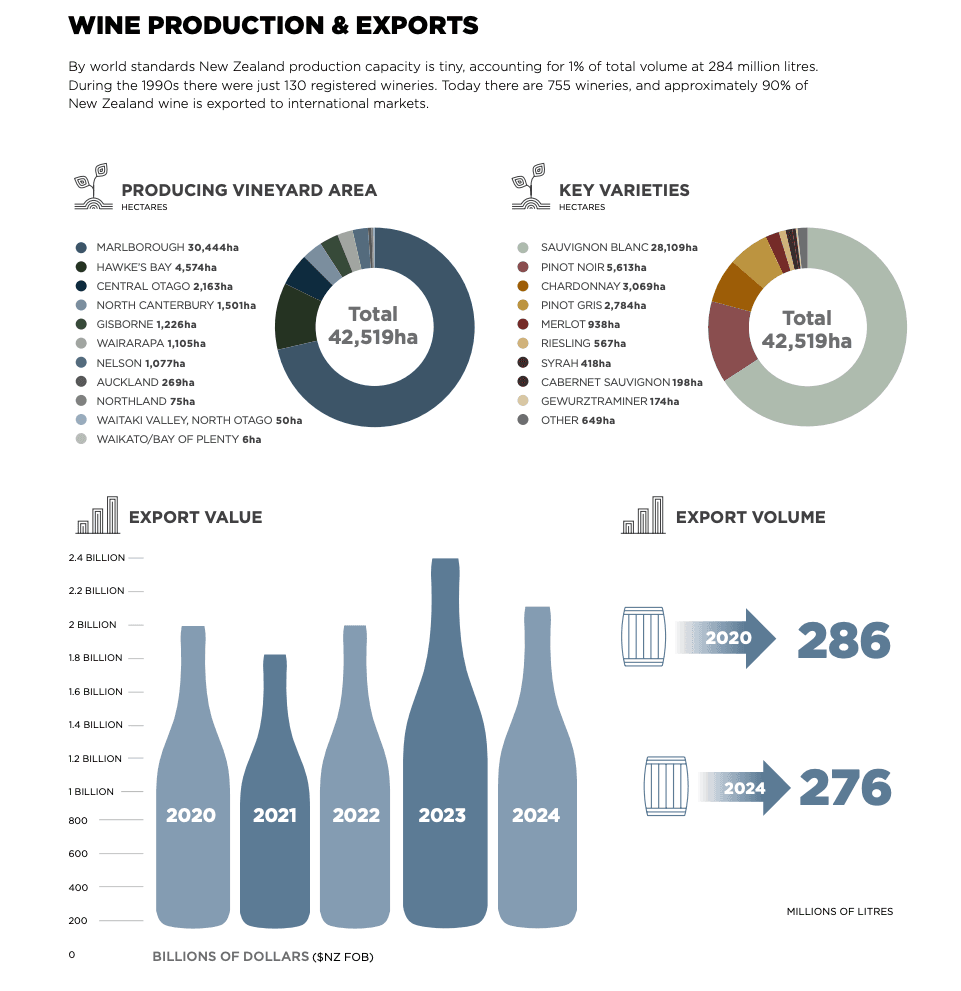
Wineries
The NZW Directory lists 513 producers. According to the NZW Annual Report, 755 members sell wine (membership is required for export).
Some of the larger producers
- Indevin Group – With over four thousand hectares stretched across Marlborough, Hawke’s Bay and Gisborne, we are the biggest grower and producer of New Zealand wine. with access to approximately 19% of New Zealand’s total grape supply. 90 Million litres of wine are processed every year across four wineries (almost 19% of the total wine exports in New Zealand). Acquired Villa Maria in 2021.
- Yealands Wine Group: Babydoll, The Crossing, Yealands
- Gallo: Nobilo, Whitehaven, Starborough, Saint Clair Family Estate, Prophecy
- Foley Family Wines: Boatshed Bay, Clifford Bay, Dashwood; Goldwater, Grove Mill, Martinborough, Mt Difficulty, Russian Jack, Sanctuary, Te Kairanga, Te Tera, The Pass, Vavasour
- Vinarchy: Mudhouse, Brancott Estate, Stoneleigh, Church Road (more)
- Constellation Brands: Kim Crawford, Drylands
- LVMH: Cloudy Bay
- Treasury Wine Estate: Matua
- The Wine Group: Monkey Bay
- Delegat Group: Oyster Bay, Delegat
- Edmond de Rothchild Heritage: Rimapere, Akarua
- Sogrape: Framingham
The World’s Best Vineyards
Five New Zealand wineries were listed in The World’s 50 Best Vineyards 2024 (for what is worth).
- 54. Rippon – Central Otago
- 68. Cloudy Bay Vineyards – Marlborough
- 73. Craggy Range – Hawke’s Bay
- 85. Ata Rangi – Martinborough
- 89. Black Estate – Waipara Valley
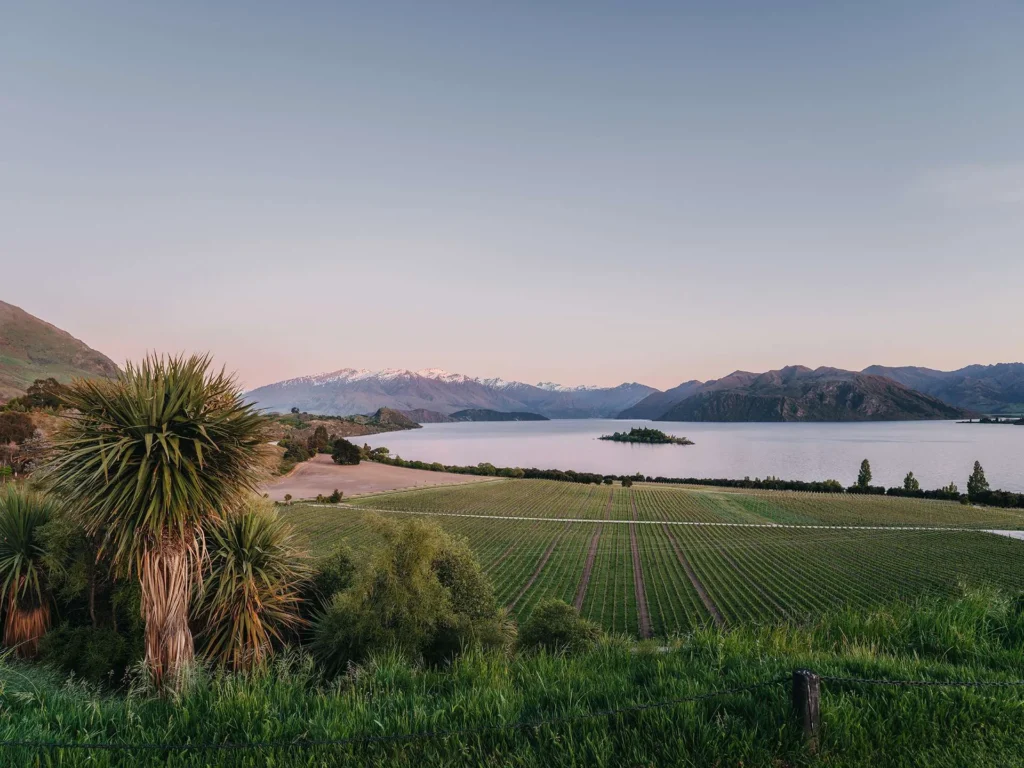
Real Review – Top Wineries 2025
The Real Review lists 140 as New Zealands top wineries for 2025.
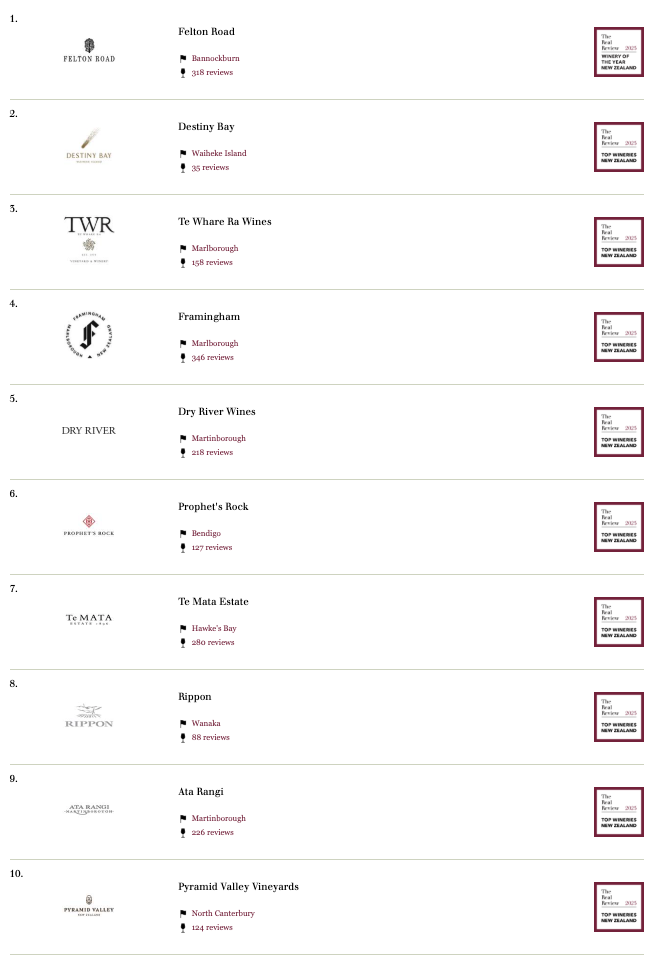
Google Earch
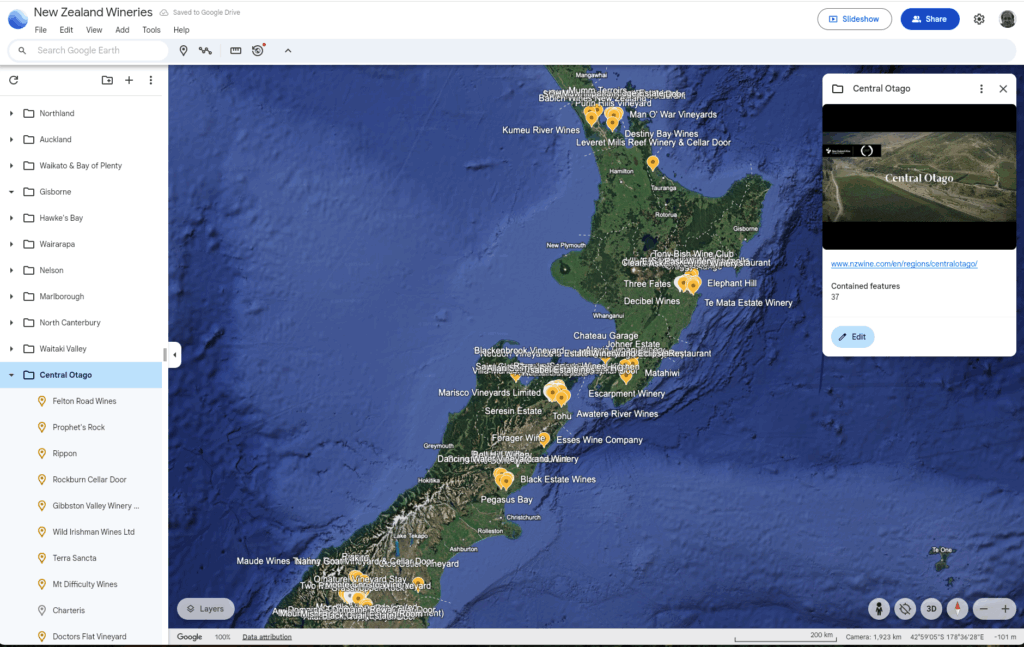
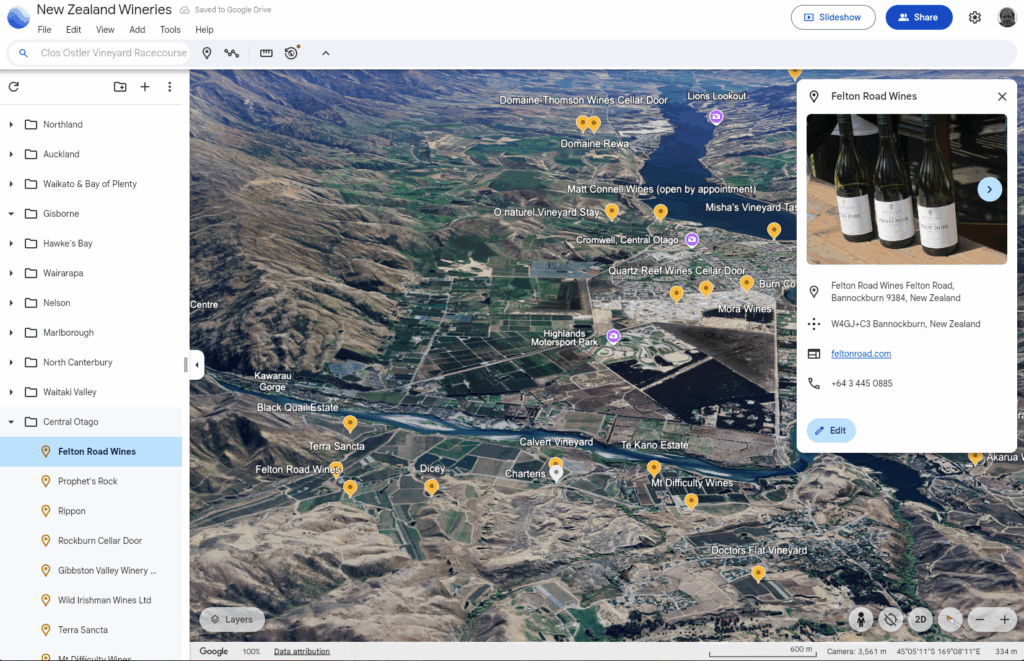
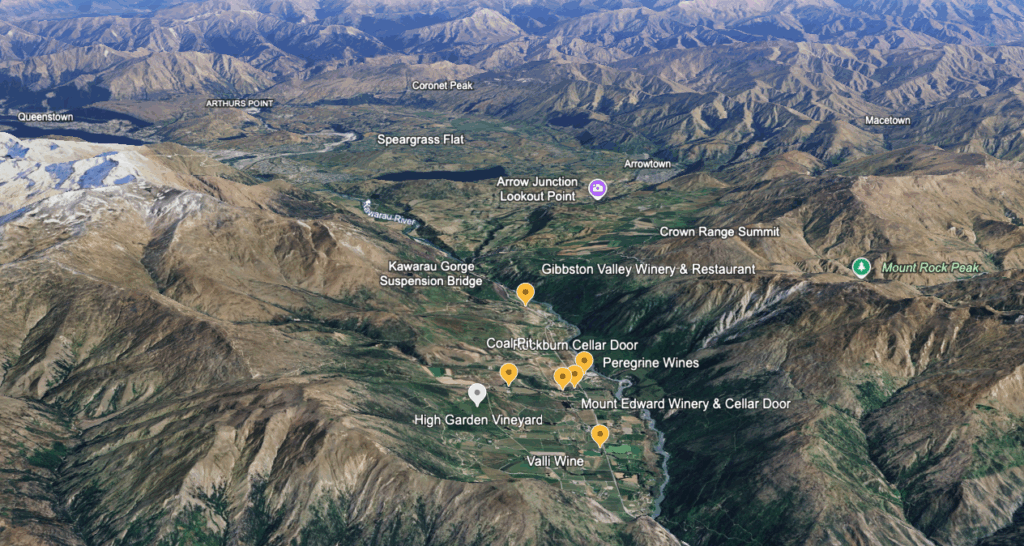
A Little History
Both the largest producing region and the most significant white grape variety were not yet on the map, 50 years ago when 90% of wine production was fortified sherries, ports, and liqueurs.
A grape survey from 1965 with acreages (±1200 ac / 485 ha): brandy, sherry, table grapes, sparkling.
- A History Of Wine In New Zealand, by David Rogers – Grape Collective 2016
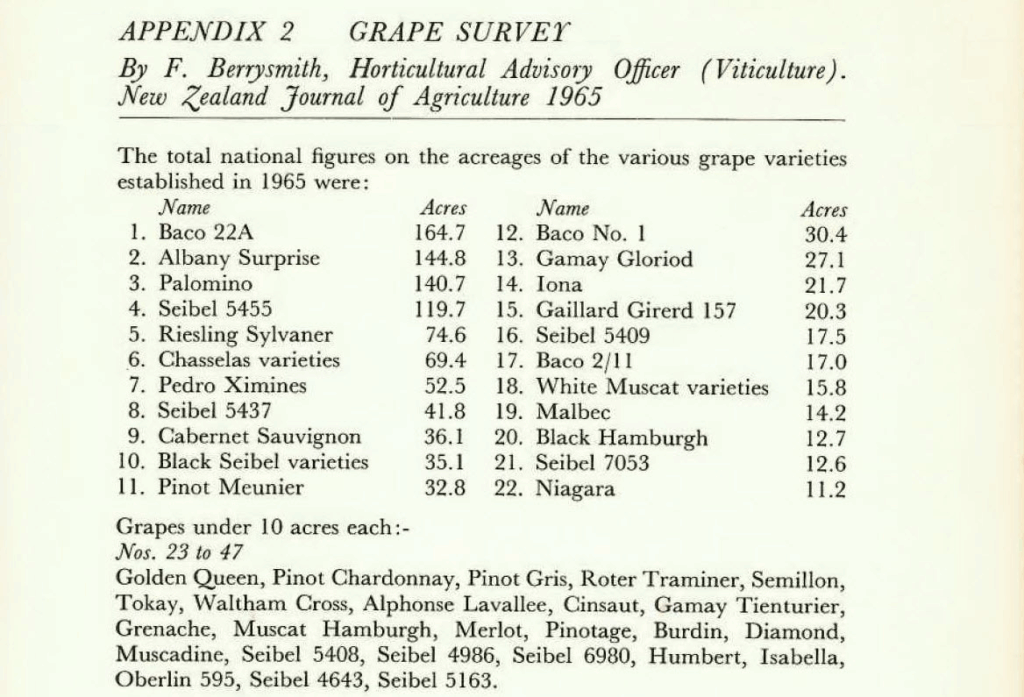
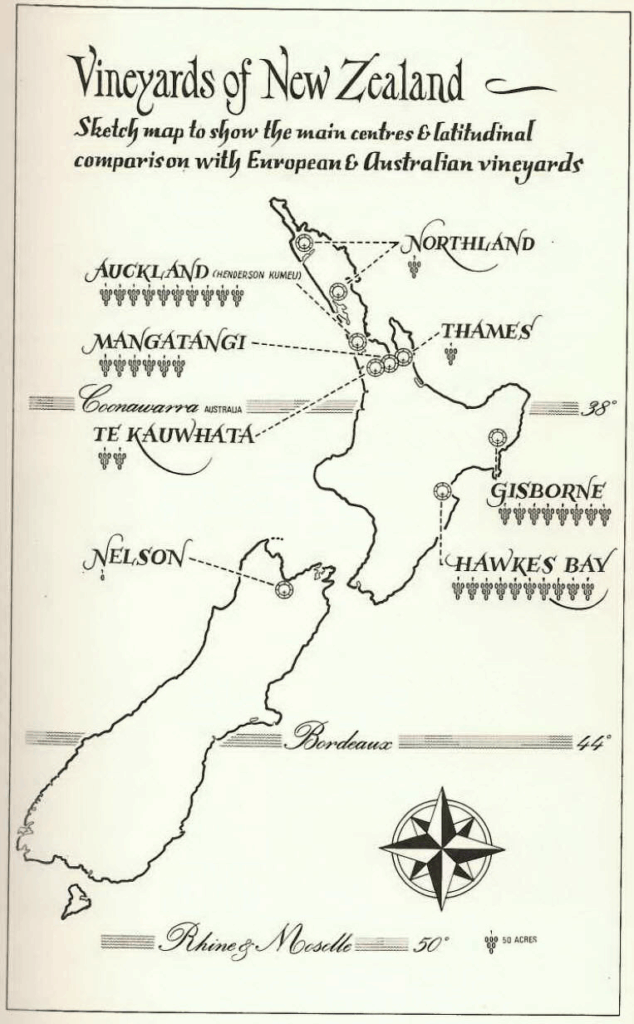

Wine production in the 1960s was mainly to be found around Auckland (family enterprises, often non-English immigration background) and Hawke’s Bay (a few large entreprises). Initially, expansion stayed on North Island (Gisborne), the moved to South Island, primarily Marlborough.
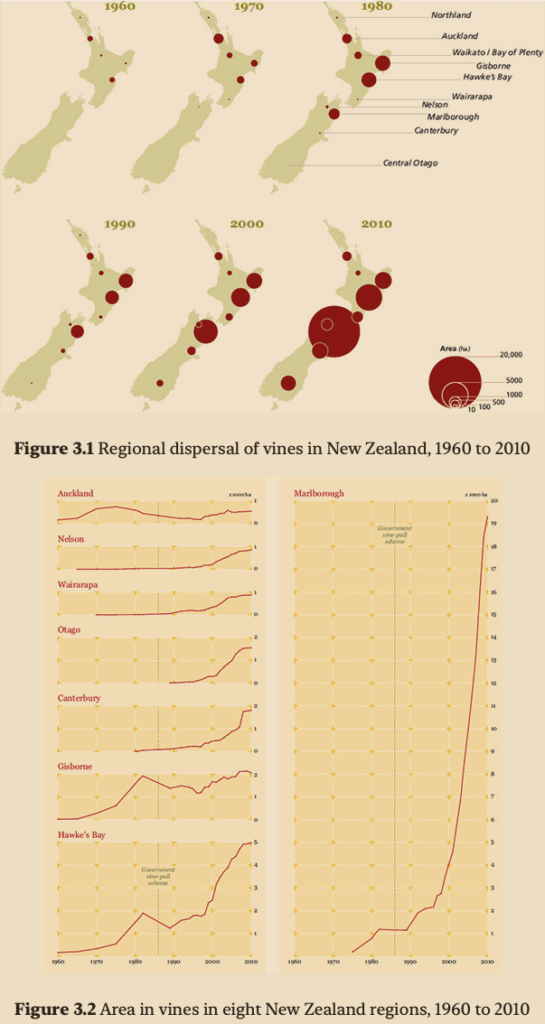
After the hybrids, came Müller-Thurgau (a.k.a. Sylvaner Riesling), the chardonnay and sauvignon blanc.
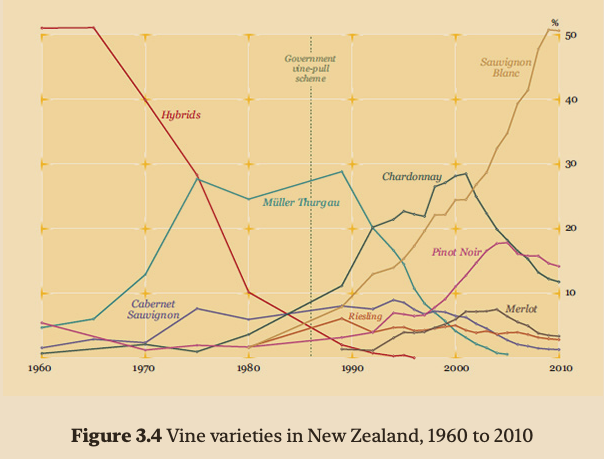

Around the turn of the century, four companies (Montana, Corbans, Villa Maria and Nobilo) produced about 80% of the wine. The rest of the industry was family-based (350 winemaking; 700 grape growing).
Montana acquired Corbans in 2000, was bought by Allied Domec (later Pernod Ricard), rebranded to Brancott Estate, and now part of Vinarchy. Nobile was acquired by Hardy and then Constellation Brands. Villa Maria was acquired by Indevin in 2021.
All four comanies were founded by “Dalmatians”, the preferred term for immigrants of Austrian(empire)/Yugoslav/Croation descent. They play an important role in New Zealand wine history, as most settlers from English descent preferred beer, rum, or stayed sober (prohibition).
- Migrant groups and the wine industry
- The winemaker : George Fistonich and the Villa Maria story by Kerry Tyack – 2012 [9781869799779]

Montana produced the first sauvignon blanc in 1979, as in Australia labelled by variety and vintage. The fame came with Cloudy Bay, founded 1985.
- New Zealand Wine (New Zealand Wine Growers)
- New Zealand Wine Story
- History of New Zealand Winemaking
- Mission Estate: the next 150 years
- (many more articles)
- New Zealand History
- Te Ara (Encyclopedia of New Zealand)

Wine Regions
For an introduction, see the Regions secion on NZW website and Textbook.
The global standard-bearer for popular Sauvignon Blanc, New Zealand nonetheless boasts a range of climates and wine styles including critically-regarded Pinot Noir and Chardonnay.
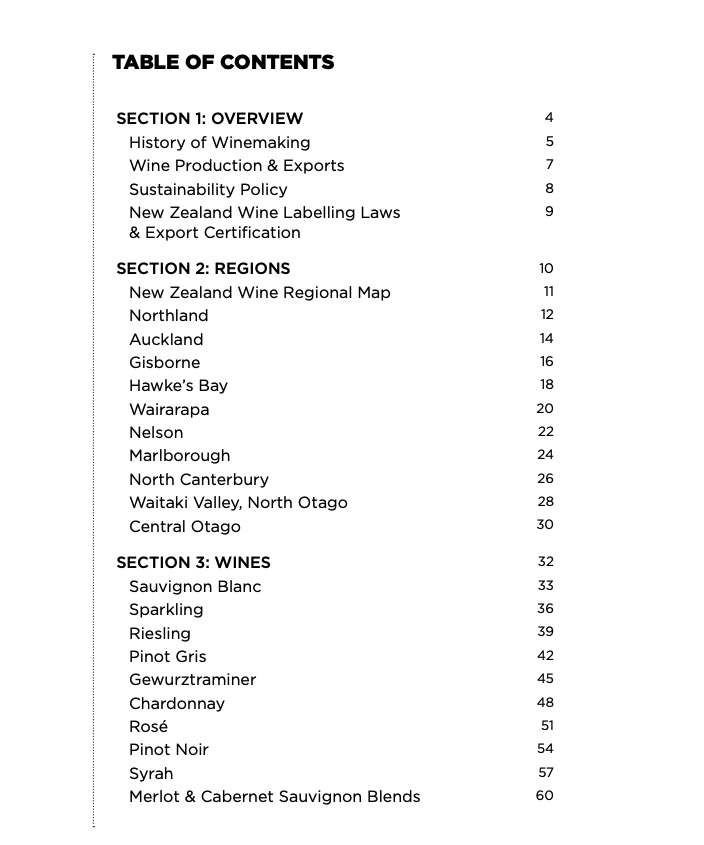
Videos are also posted to the New Zealand Wine YouTube channel.
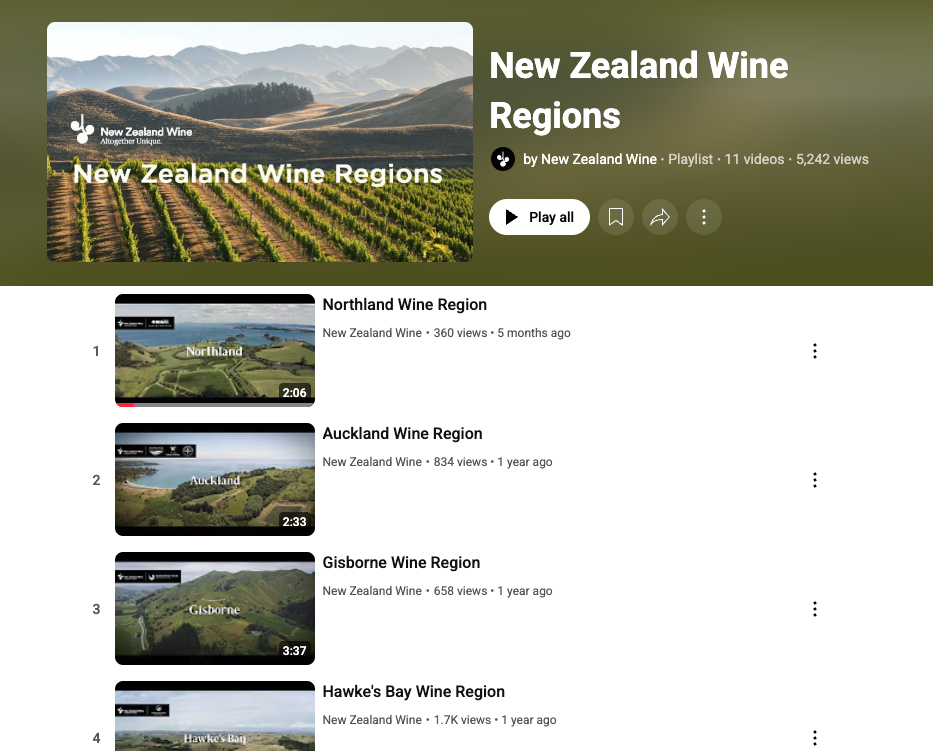
Geographical Indications Register
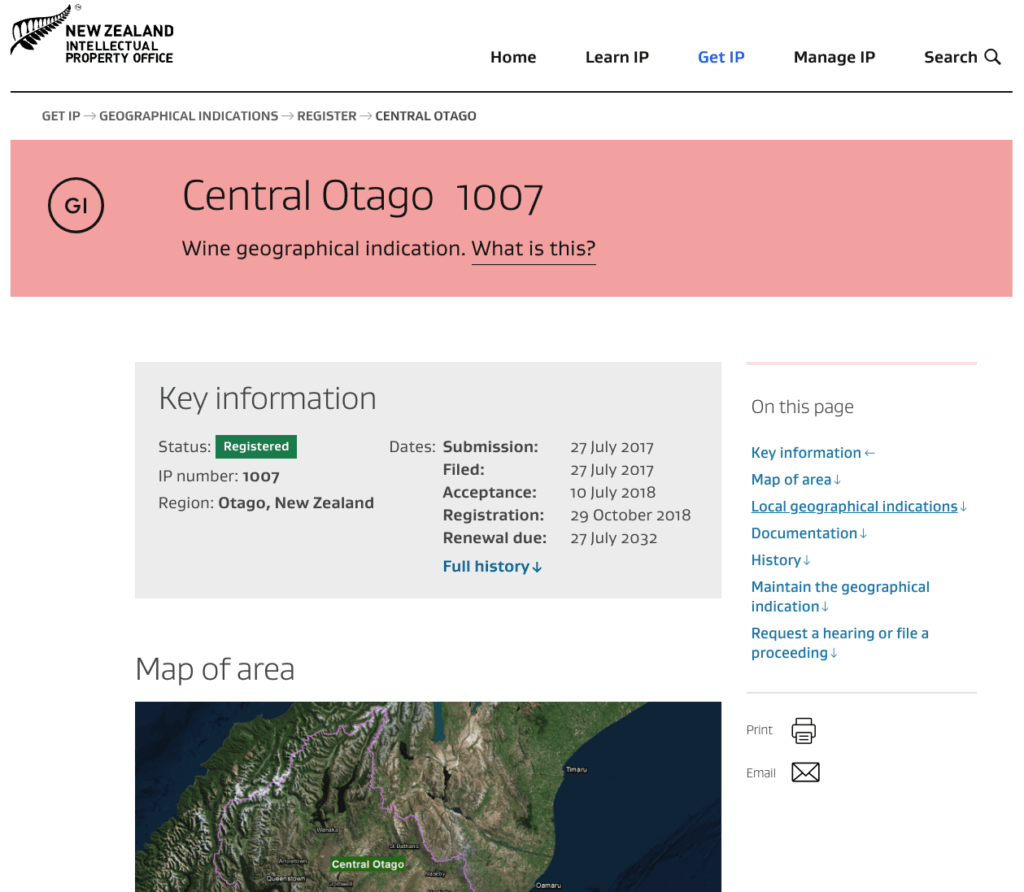
Marlborough
For information about Marlborough, visit
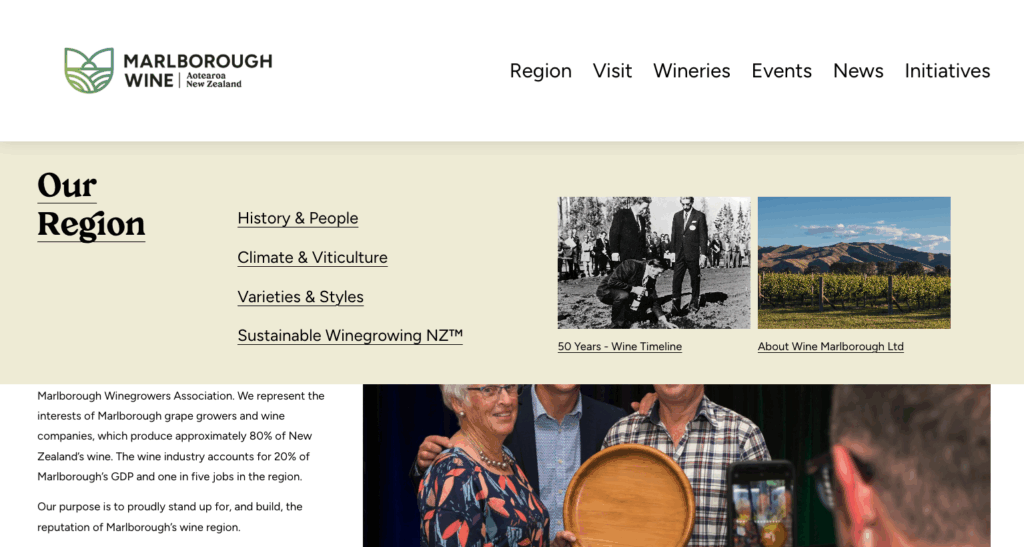
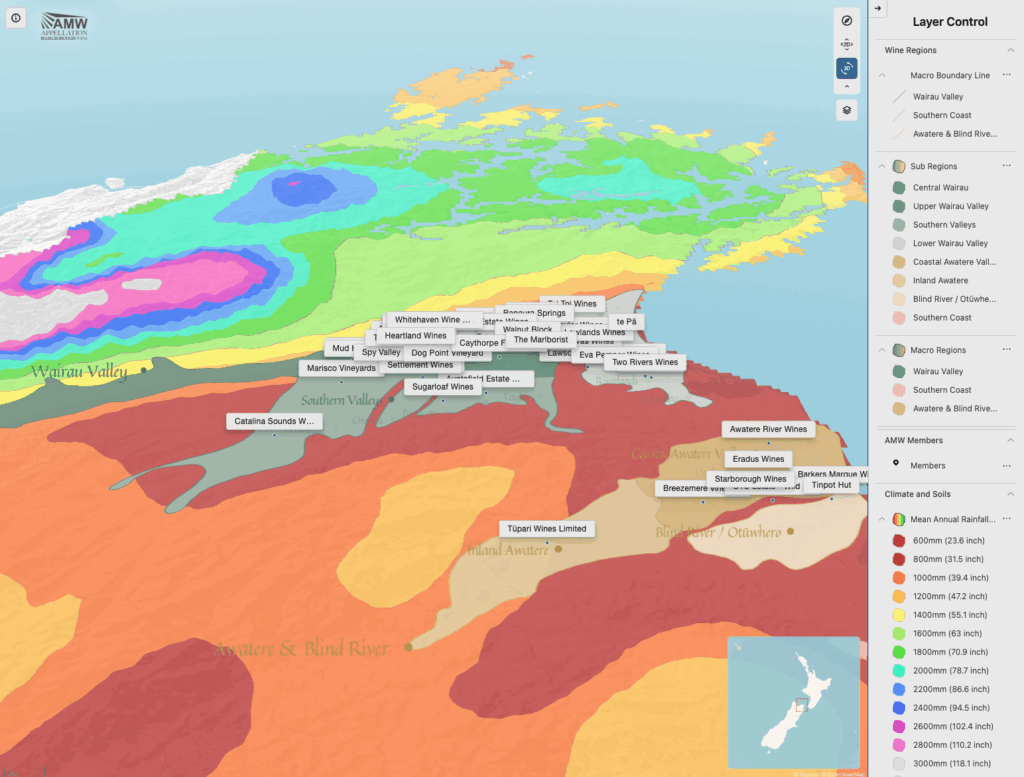
Hawke’s Bay
For information about Hawke’s Bay Wine, visit
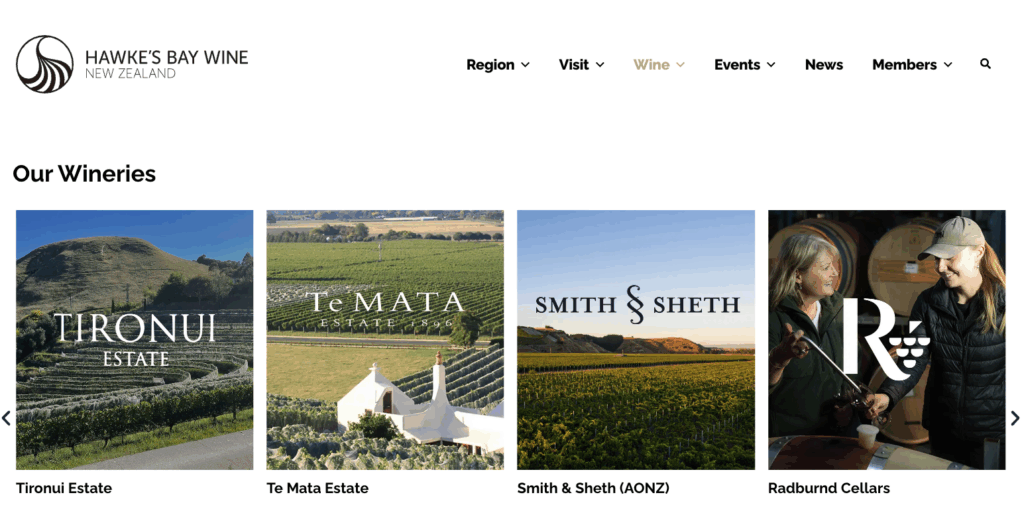
Wairarapa
For information about Wairarapa Wine, visit
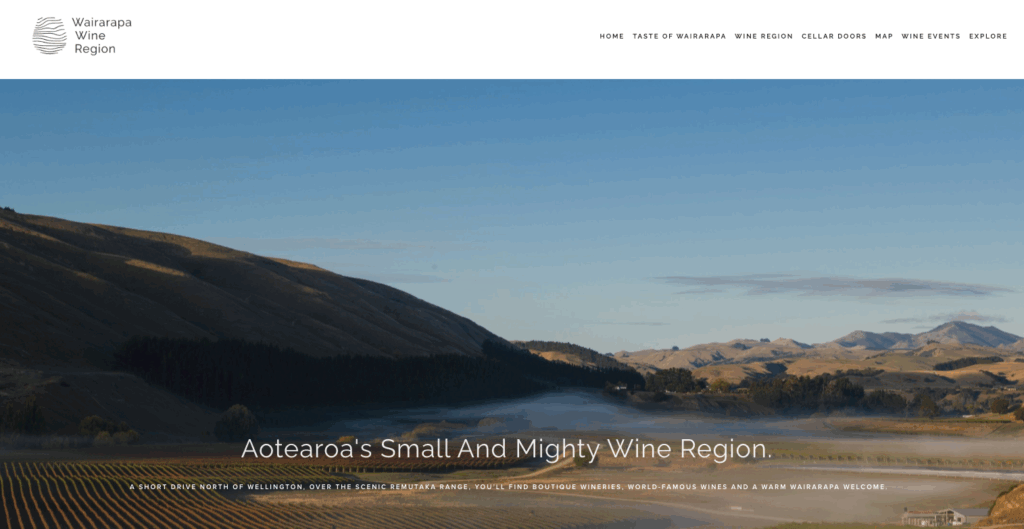
Climate
For climate information, see
New Zealand’s climate is complex and varies from warm subtropical in the far north to cool temperate climates in the far south, with severe alpine conditions in the mountainous areas.
- Mountain chains provide a barrier for the prevailing westerly winds, dividing the country into dramatically different climate regions.
- Annual temperature: 10°C – 16°C (south > north), most variation east and inland (up to 14°C).
- Sunshine hours are relatively high; midday summer solar radiation index (UVI) can be extreme in some areas.
- Snow in the mountains, rarely in the coastal areas. Frosts can occur.
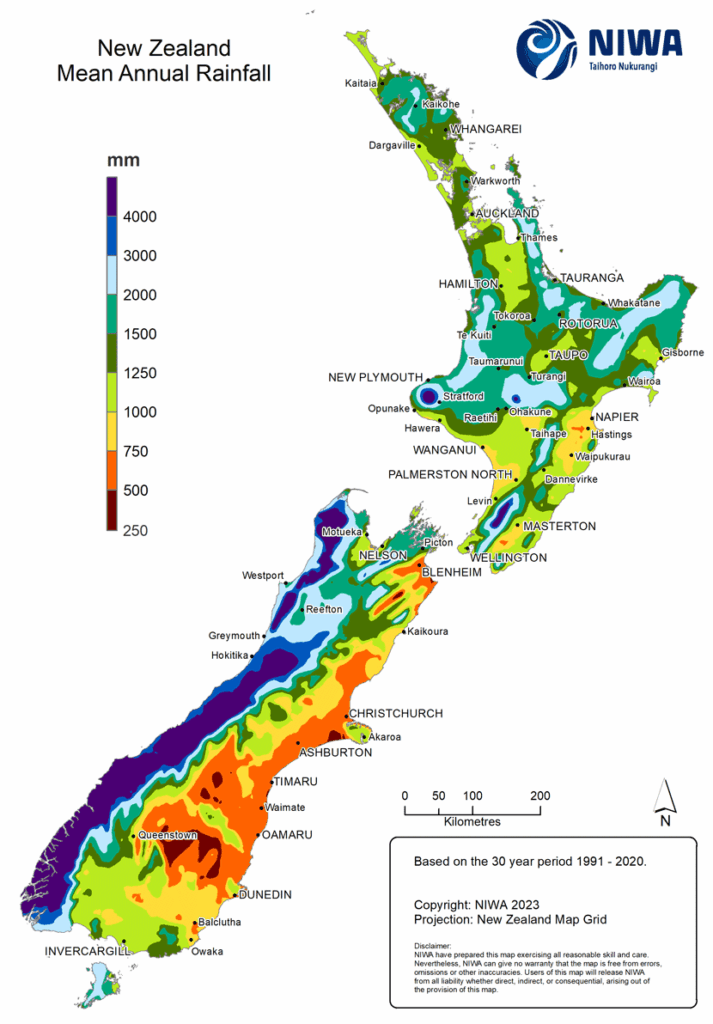

New Zealand mapped over Europe. Due to the maritime climate the growing conditions are different. Most of the country is too wet to grow grapes. Average temperatures are lower which explains the predominance of varieties in Europe found on higher latitudes: sauvignon blanc, chardonnay, pinot noir, riesling (and müller thurgau).
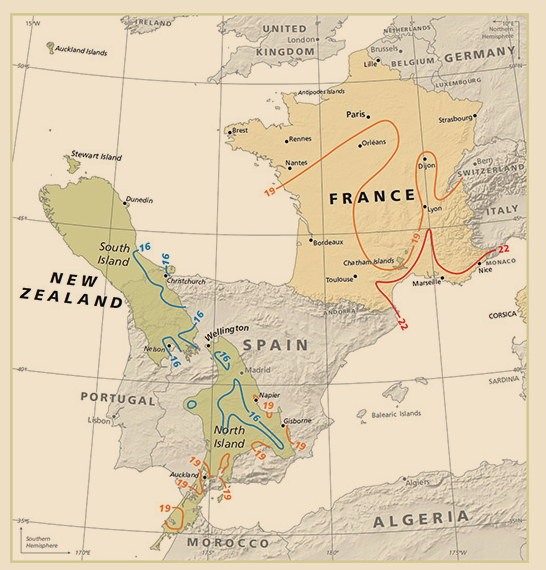
Learning
New Zealand Wine
NZW provides a New Zealand Wine Discovery Course (with suggested wines)
This course is self-taught through the downloadable resources provided below, with a multichoice examination and Certificate of Completion provided to successful students. It should take approximately one hour to complete.
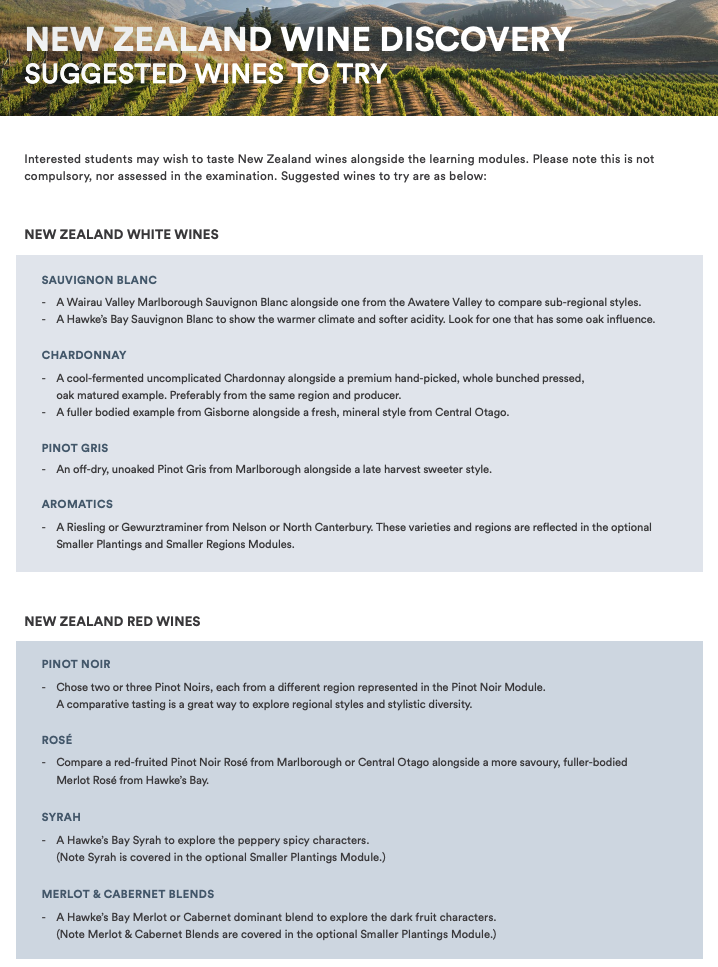
New Zealand School of Food & Wine
The New Zealand School of Food & Wine has a certifcation course (2 day) based on the wine guide written by director, Celia Hay.
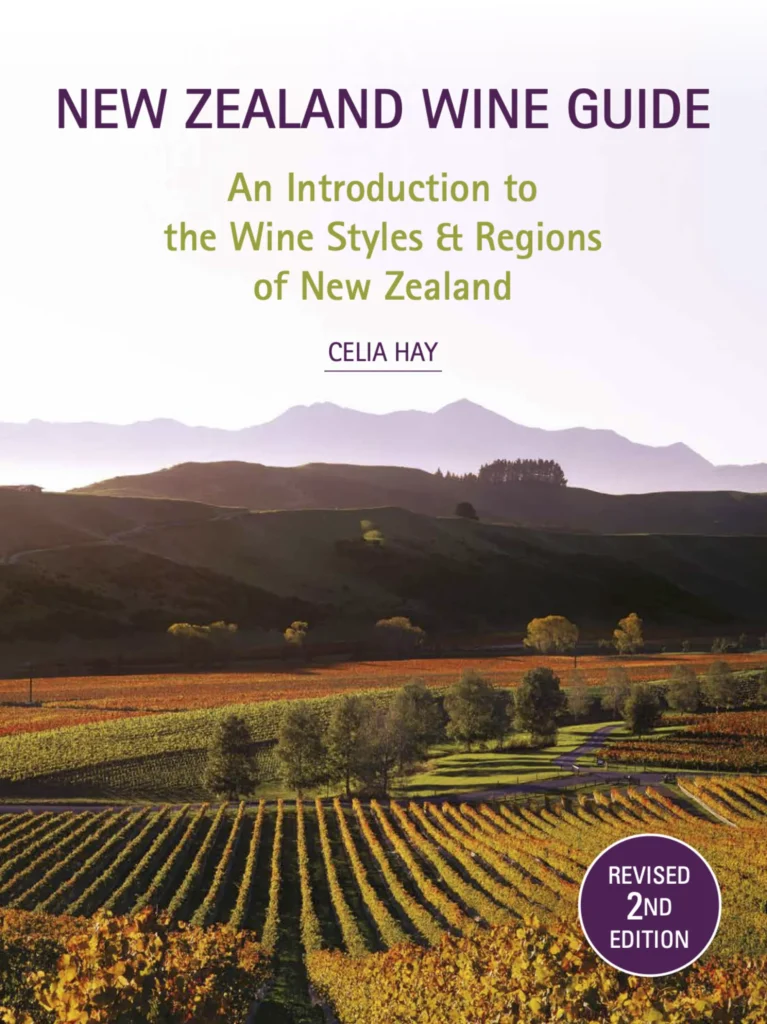
New Zealand Wine Directory
The New Zealand Wine Directory (John Bartlett‘s comprehensive online resource) lists over 120 wine-related books about New Zealand.

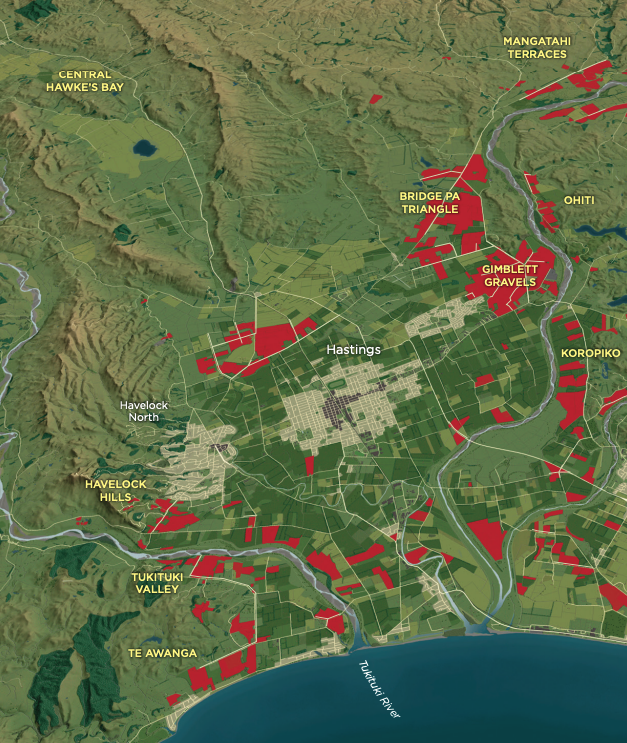
Masters of Wine
With a population of 5.5 million, New Zealand is well presented.
- Michael Brajkovich MW (1989) – Kumeu River Wines
- Bob Campbell MW (1990) – Wine Educator
- Jane Skilton MW (1993) – New Zealand School of Wines and Spirits
- Stephen Bennett MW (1994) – Mucho Gusto Wine Co.
- Simon Nash MW (1994) – MN Consultancy
- Steve Smith MW (1996) – Smith & Sheth
- Alastair Maling MW (2000) – Maling Wines
- Sam Harrop MW (2003) – Sam Harrop Wines
- Paul Tudor MW (2006) – Basket Press
- David Allen MW (2010) – director Wine Searcher
- Emma Jenkins MW (2011) –
- Stephen Wong MW (2016) – Wine Sentience
- Ross Wise MW (2020) – WIne maker
- Michael Henley MW (2021) – director New Zealand Wine Growers
- Sophie Parker-Thomson MW (2021) – Blank Canvas Wines
Podcasts
Tim Atkin – Cork Talk
Tim Atkin MV has been making his weekly Cork Talk podcast since May 2020, interviewing winemakers world wide. This includes several winemakers/-personalities from New Zealand.
- Cork Talk with Steve Smith (Master Wine 1996) – Nov 20, 2020
- Cork Talk with Michael Brajkovich (Master Wine 1989)- Nov 25, 2021
- Cork Talk with Kevin Judd – Jun 17, 2022
- Cork Talk with Nigel Greening – Oct 28, 2022
- Cork Talk with Duncan Forsyth – May 31, 2023
- Cork Talk with Jen Parr – Jan 9, 2025
- Cork Talk with Sam Harrop – June 6, 2025
- Cork Talk with Marquis Sauvage – July 4, 2025
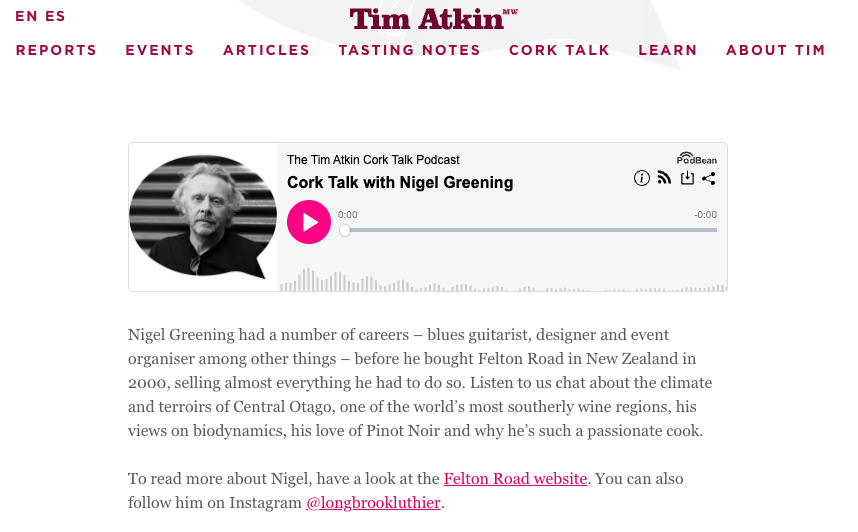
NZ Wine Podcast
Since 2017, host Boris Lamont chats with one or more wine makers or wine experts.
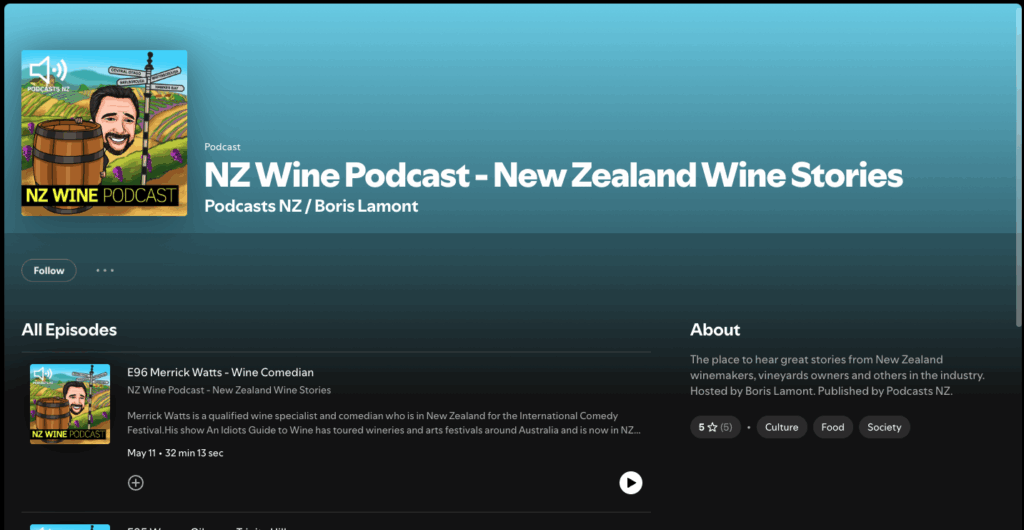
Miscellaneous
Articles
Tim Atkin has written several articles about New Zealand wine. You can find them on his website (plus contributions by others).
- Marlborough – 4 November 2012
- Sir George (Fistonich) hits 50 – 10 February 2013 (Decanter)
- New Zealand’s hothouse Syrah by Matt Walls – 20 February 2017
- New Zealand Sauvignon Blanc: too much of a good thing? – 7 March 2018
Jamie Goode has posted several articles about the region
Wine Searcher
Wine Searcher has articles and background stories about wine regions and producers
Wine Searcher also provides insitghts (based on search frequency) of the most popular, best value, expensive or cheapest wines.

Wine Companion
In 2024, the Hallliday Wine Companion started to include New Zealand.
